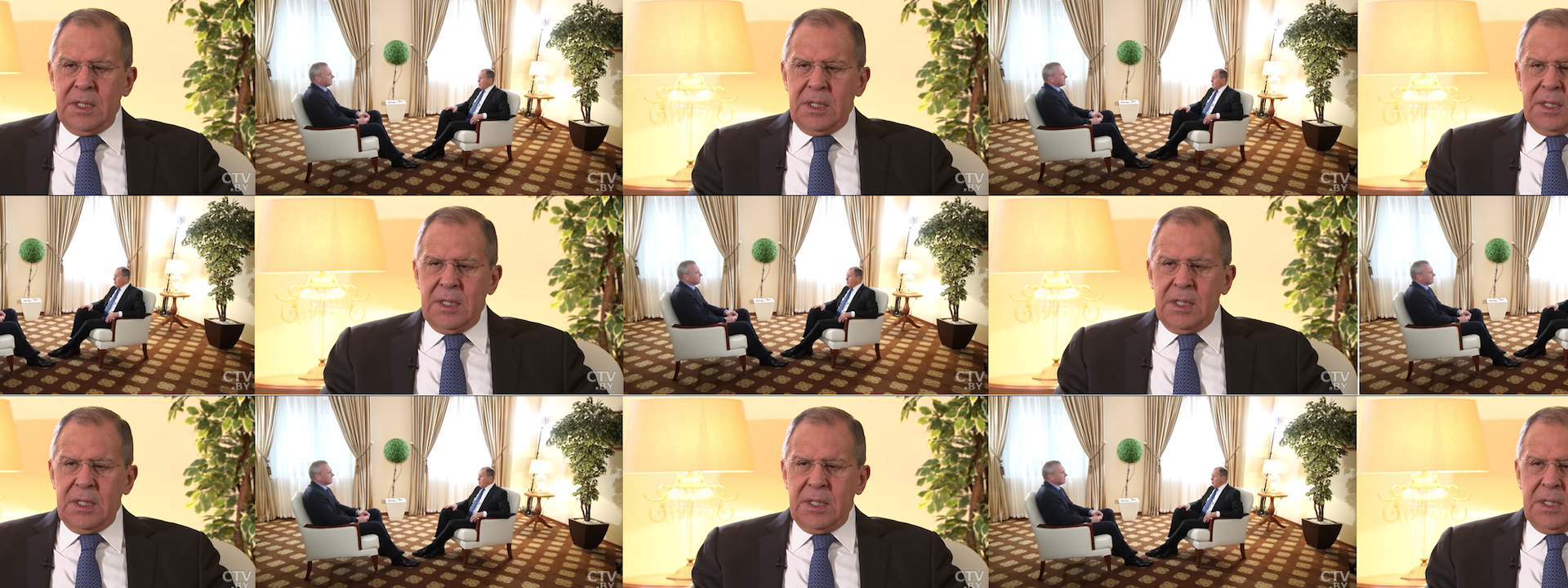#BalticBrief: Russia Claims Secret NATO Deployment
Russian Foreign Minister accuses NATO of using Zapad 2017 as a pretext for military deployments to the Baltics and Poland
#BalticBrief: Russia Claims Secret NATO Deployment

Russian Foreign Minister accuses NATO of using Zapad 2017 as a pretext for military deployments to the Baltics and Poland

In an interview with Belorussian television channel CTV on December 3, Russia’s Minister of Foreign Affairs Sergey Lavrov, accused the United States via NATO of using Russia’s largest joint military exercise, Zapad 2017, as a pretext for the deployment of troops in the Baltic states and Poland.
According to Lavrov:
Everyone who wished to attend this exercise, did so, and confirmed that everything was transparent. But, while hysteria was whipped up, our U.S. colleagues, together with NATO, were able to deploy additional military contingents and military hardware on the sly to the Baltic states and Poland.
He added:
The excuse was used though the fears were not in the slightest justified, but as the phrase goes, the case is closed.
In the interview, Lavrov did not explain what additional military contingents and hardware he referred to. While there are NATO troops and equipment in Poland and the Baltic states, Lavrov’s claim that the presence increased in response to Zapad 2017 is misleading.
The United States did, in fact, deploy three additional fighter jets and 600 American paratroopers to the Baltic states and Poland for the duration of Zapad. However, the deployment was public, reported by Reuters at the time, and there is no evidence to suggest that the additional forces overstayed their visit.
Similarly, the recent arrival of the 2nd Armored Brigade Combat Team (ABCT) to Poland, which was recently targeted by similar Kremlin disinformation, was a part of a planned rotation of U.S. Army Europe, a part of Operation Atlantic Resolve. As @DFRLab reported in October, the deployment of the 2nd Armed Brigade Combat Team was first announced in April 2017, six months before the start of Zapad 2017. There is no evidence to uphold the claim that the deployment was linked to Russia’s military exercise, but the deployment was rather a part of the rotational schedule.
Third, NATO’s concerns about Zapad 2017 were dismissed by Lavrov as “hysteria”, a term which Kremlin-funded RIA Novosti, for example, reported on at least eight times since September 2017.
The exercise did not comply with the transparency requirements set out in the Vienna Document, which requires “briefings on the scenario and progress, opportunities to talk to individual soldiers about the exercise, and overflights of the exercise”. Belarus and Russia, instead, selectively chose which elements of the exercise to disclose to the international observers, which fell short of the Vienna requirements. That, coupled with Russia’s historical track record of using large snap exercises to intervene in Georgia in 2008 and annex Crimea in 2014, made Russia’s western neighbors concerned.
Lavrov’s statement recycled a number of other Kremlin anti-NATO narratives, used over the past fifteen years.
For instance, Lavrov said, “NATO promised not to expand eastwards.” This was likely in reference to NATO’s alleged promise not to expand eastward allegedly made in 1990. Lavrov also said, “NATO has broken international agreements.” The second statement likely referred to the NATO-Russia Founding Act of 1997.
Both statements have been debunked numerous times. NATO made no promises not to expand into eastern and central Europe back in 1990, which was confirmed by the former president of the Soviet Union Mihail Gorbachev. Back in 2014, Gorbachev said:
The topic of ‘NATO expansion’ was not discussed at all, and it wasn’t brought up in those years. I say this with full responsibility.
Similarly, NATO did not break the “Substantial Combat Forces” pledge of the 1997 NATO-Russia Founding Act. The pledge precluded “permanent stationing of substantial combat forces” in the region. The four multi-national battle groups deployed in Poland, Lithuania, Latvia and Estonia are rotational, defensive, and well below any reasonable definition of “substantial combat forces.”
To conclude, this is yet another example of how Russia’s top diplomat is bending the facts to promote a narrative that portrays NATO and the Baltic states as hysterical, yet calculating adversaries, and Russia as a victim of NATO’s expansion eastward. This shows that the Kremlin disinformation machine is a full-spectrum apparatus, which includes the Foreign Minister, himself.
Follow along for more in-depth analysis from our #DigitalSherlocks.

